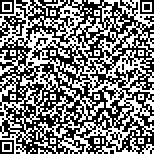下载中心
优秀审稿专家
优秀论文
相关链接
摘要

2. 福州大学遥感信息工程研究所, 福州 350116;3.
3. 福建省水土流失遥感监测评估重点实验室, 福州 350116
缨帽变换是一种实用性都很强的遥感影像增强方法,已被成功地应用于各种遥感领域。然而,对于缺少中红外波段的4波段高分卫星传感器,采用常规的Gram-Schmidt正交化方法难以推导出缨帽变换的湿度分量,即便少量推导出湿度分量的算法也存在着结果失真的问题。因此,开展针对4波段传感器缨帽变换系数的推导,提出了先确定湿度分量、再确定亮度和绿度分量的逆推算法,并将其应用在ZY-3 MUX传感器数据上。实验结果表明:(1)逆推方法可以有效地推导出ZY-3 MUX缨帽变换的湿度分量,较好地解决了前人研究中出现的湿度分量失真问题;(2)新方法求出的3个分量的散点在其三维特征空间中呈现典型的“缨帽”特征,较于传统的Gram-Schmidt正交化方法,新方法的散点在水体、植被和建筑用地/裸土之间的空间分布位置可以更好地相互分离,不会造成不同地类之间的混淆;(3)采用新方法所得到的缨帽变换系数的精度好于传统的Gram-Schmidt正交化方法,体现在新方法具有较高的R值和较低的RMSE误差。本研究可为ZY-3 MUX数据提供一套有效的缨帽变换系数,同时也为缺乏中红外波段的高空间分辨率遥感影像提供一种新的缨帽变换系数推导方法,解决了常规Gram-Schmidt正交化方法无法准确表示湿度分量的问题。
Tasseled Cap Transformation (TCT) is a commonly used remote sensing technique that has been successfully applied in various remote sensing fields. However, for high-resolution satellite sensors that usually have only four visible near-infrared bands but lack a mid-infrared band, the retrieval of the TCT wetness component has not always been successful with the traditional Gram-Schmidt (GS) orthogonalization method. Moreover, although a few studies have developed the wet component for such four-band sensor data, the derived results are somewhat unreasonable. Therefore, this study proposes a new method to derive the coefficients of the TCT wetness component for the four-band sensor data. In particular, the new method is used to derive the TCT coefficients of the ZiYuan-3 (ZY-3) MUX sensor data of China.
Eleven ZY-3 MUX images and six synchronous/near synchronous Landsat 8 Operational Land Imager (OLI) images from different regions across China were used as test and validation images. From these image sets, seven ZY-3 MUX images and three Landsat 8 OLI images served as test images, while the other four ZY-3 MUX images and three Landsat 8 OLI image served as validation images. A large number of samples representing different land-cover types, such as dry and wet soil, dense vegetation, and water, were randomly selected from the test images.
The new method proposed in this study for deriving the TCT coefficients is a back derivation (BD), in which the TCT wetness component rather than the brightness component was first retrieved, as previously performed in the traditional Gram-Schmidt method. Three synchronous/near synchronous image pairs of ZY-3 MUX and Landsat 8 OLI were used to derive the wetness component coefficient of ZY-3 MUX, particularly by relating the ZY-3 MUX data with the Landsat 8 wetness component based on the selected 735297 pixel samples. Then, the brightness and greenness components of the ZY-3 data were derived by implementing the traditional methods. Finally, the new BD method and the traditional method were compared to verify the feasibility of the new method.
The experimental results indicate the following:(1) the TCT wetness component of ZY-3 MUX retrieved by the BD method can effectively solve the spectral distortion problem that exists with the wetness component of the four-band sensor data derived by the traditional method; (2) the scatters of the three components (brightness, greenness, and wetness) derived by the new method have typical tasselled-cap-like shapes in 3D feature space, and they are composed of the three components. Compared with the traditional GS method, the scatters of water, vegetation, and built land or bare soil retrieved by the BD method are clearly separated in 3D feature space, whereas the scatters vaguely overlap in the traditional GS method; (3) the accuracy of the TCT coefficients derived by the new method is higher than that derived by the traditional GS method, considering that the new method has a higher correlation coefficient (R) and a lower root mean square error when validated with the corresponding TCT components of the Landsat 8 data. This finding is due largely to the improved accuracy of the wetness component derived by the new method.
This study provided a set of TCT coefficients for ZY-3 MUX sensor data, and it presented a new method for deriving TCT coefficients for high-resolution spatial remote sensing imageries with only four visible near-infrared bands but lack mid-infrared bands. The new method effectively solves the retrieval problem of the wetness component of the four-band sensor data existing in the traditional GS method.

